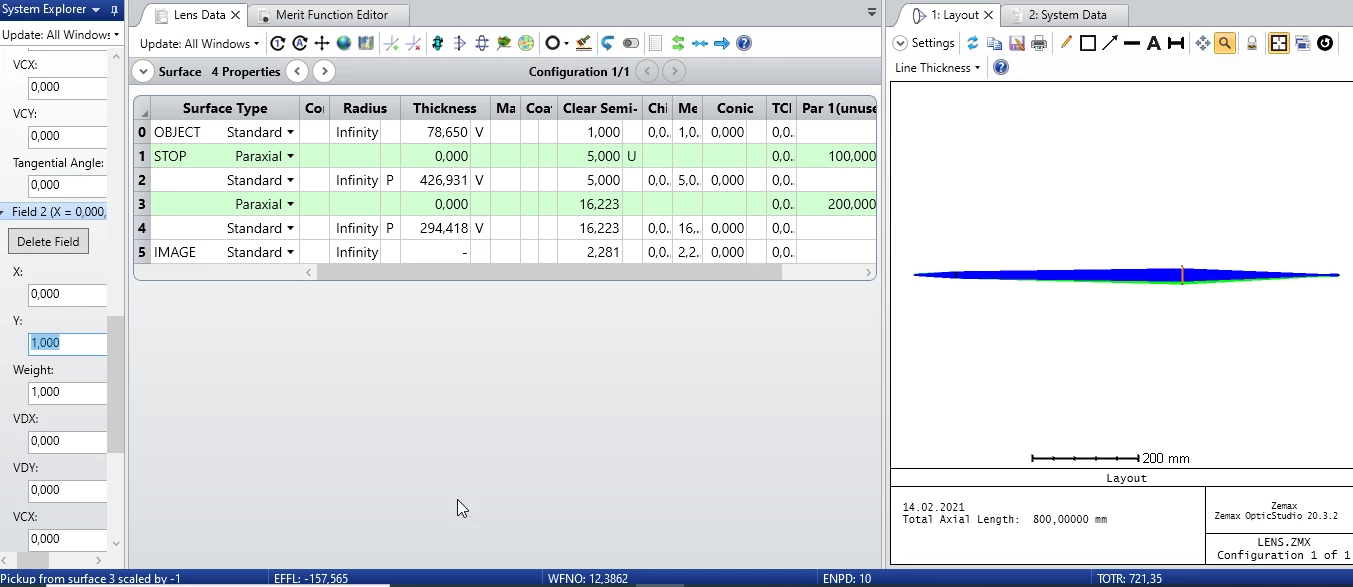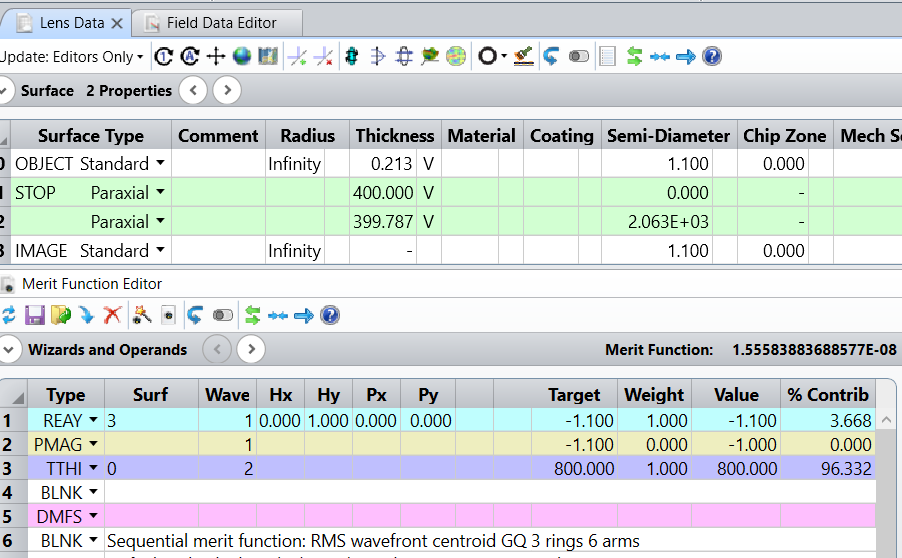Hello,
I ould be really thankful for clarification how to achieve a paraxial Magnification.
So I have system of two paraxial lenses with focuses 100 and 200. And I need to determince distance beween lenses and distances from lenses to the object and image. The magnification is M=-1.1x and total length of the system is 800mm.
So what I did. I definedthe obeject height 1mm in Fields and in merit function determined operand REAY with Py=1 and target=-1.1 to receive Magnification -1.1. But afer the optimization Paraxial Magnification less or higher than desired -1.1x.
So how is it possible to achieve the exact magnification M=-1.1x?
Thank you in advance!






